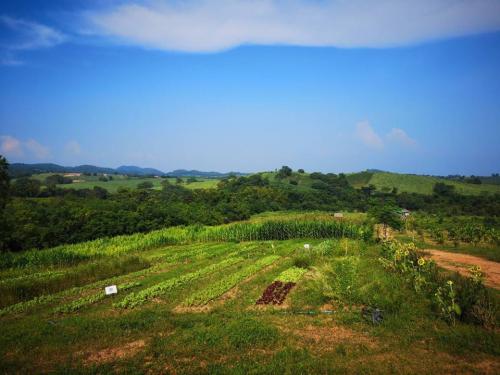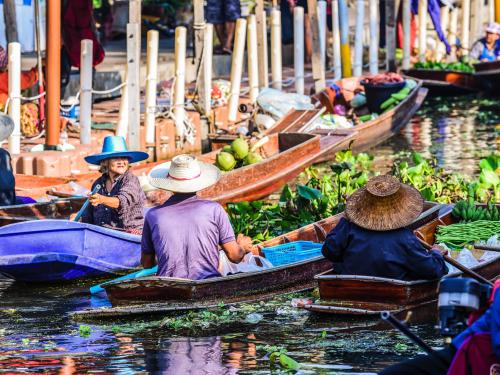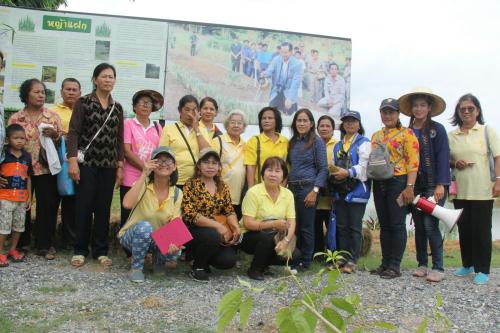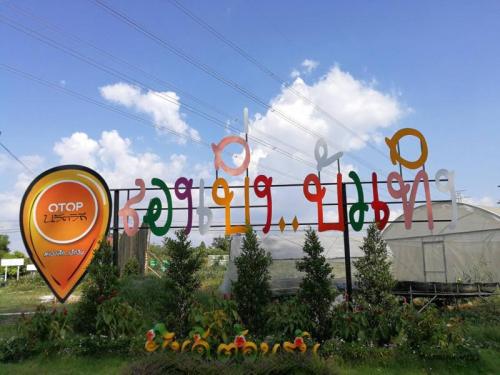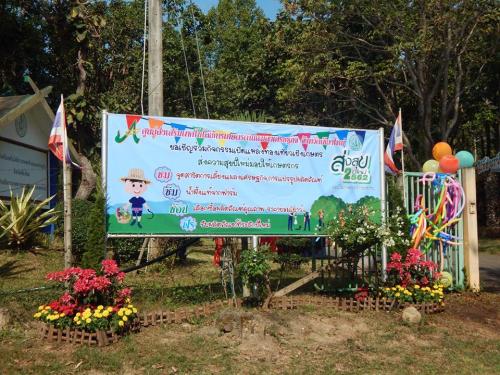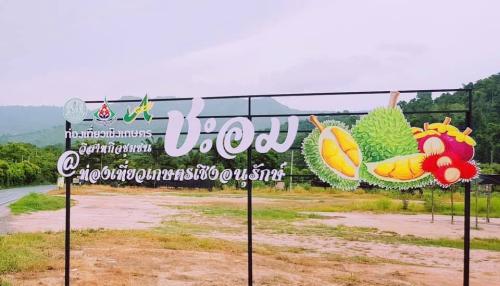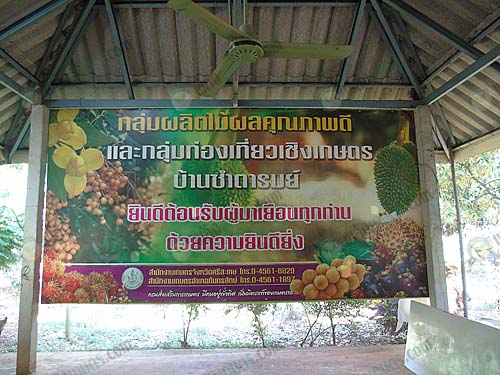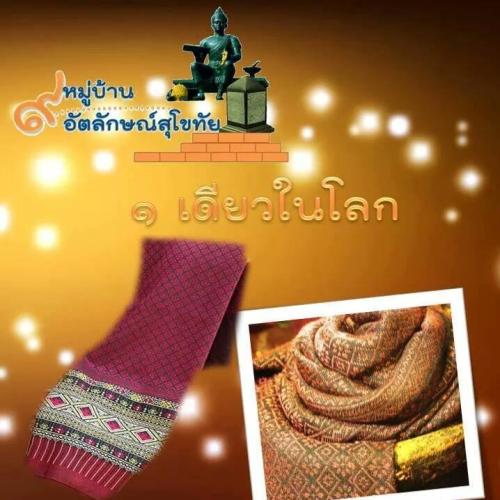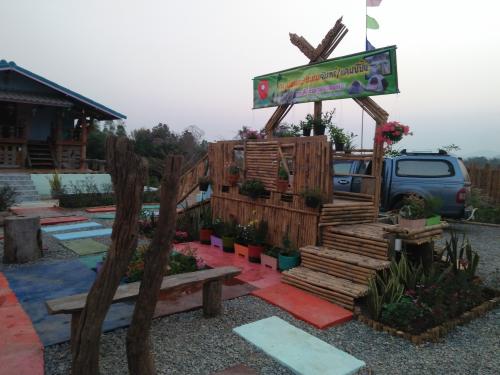Weather
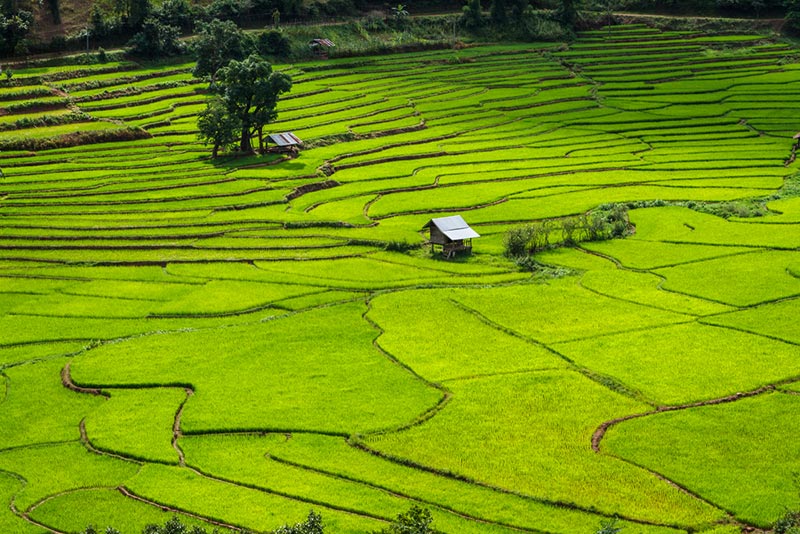
Closed
Business hours
• Sunday
: 08:00 - 17:00
• Monday
: 08:00 - 17:00
• Tuesday
: 08:00 - 17:00
• Wednesday
: 08:00 - 17:00
• Thursday
: 08:00 - 17:00
• Friday
: 08:00 - 17:00
• Saturday
: 08:00 - 17:00
Note
: -
Map
Review Score
0
Information
Rice terraces, Pid Thong Lang Phra Project is located in Chaloem Phrakiat District. It is a project under the royal initiative. Nan province is a pilot province to carry on the royal initiatives of His Majesty the King. Her Majesty Her Majesty the Queen The project's approach is to start with reducing the use of forest areas. Seeking new methods of growing rice by adopting terraced farming methods on mountain areas instead of paddy rice in order to solve poverty problems sustainably By focusing on the villagers to think for themselves But the government will go in to educate and find a suitable model for solving the problem of coexistence between people and forests in Thailand. upstream forest area Projects here are not only digging terraced rice fields, but also constructing water storage ponds, weirs, and soybean planting. including animal husbandry
Source
Thailand Tourism Directory
Recommended
Entrance fees
• Entrance fees: Non-fee
• Remark : -
Review (0)
Write Review
0
จาก 5.0
Availability
Value
Service
Relate Agritourism
King Bhumibol Adulyadej (King Rama IX) foresaw the significance of plant genetic conservation prior to a recognition of the terms “Biological Diversity” and “Conservation” in Thailand. During the trip to Klai Kang Won Palace, A. Hua Hin, Prachuap Khiri Khan Province in 1960, he passed through A. Tha Yang, Phetchaburi Province and noticed many Yang Na trees (Dipterocarpus alatus). Therefore, he had royal words to collect the seeds to plant at Phra Tamnak Piam Suk, Klai Kang Won Palace, and grow the seedlings at Royal Chitralada Projects to study. In 1985, King Rama IX gave a royal word to conserve jackfruit tress around the Grand Palace and initiated the plant conservation project in the palaces by tissue culture. Later in 1986, he had the royal idea to conserve and breed rattan palms and arrange the herbal garden in Royal Chitralada Projects area.
Her Royal Highness Princess Maha Chari Sirindhorn carried on the plant conservation project by having the royal idea and asked Lord Chamberlain to carry out plant conservation project in June 1992, when the seed gene bank was formed, and study the preservation of non-industrial crops under the royal thought framework.
In 1993, Mr. Sujin Phunikom, the Assistant Subdistrict Headman of Salui and Tha Sae District, Chumporn Province, and his group, cooperated with the Director of Ultra Products Co., Ltd. and the agriculturists in Chumporn Province to establish plant conservation project at the public area located at Moo.6, Salui District (presently Moo. 5 and 6, Salui District, and Moo.4 and 7, Song Phi Nong District). At the same time, the Royal Chitralada Projects was looking for the area to set up the Plant Genetic Conservation Project Under The Royal Initiative of Her Royal Highness Princess Maha Chari Sirindhorn.
Subsequently, Royal Chitralada Projects represented by Professor Prachid Wamanont (the Consultant) and the team met with Chumporn Governor (Mr. Prayoon Promphan) to discuss about the project. The first five years, the project was named “Plant Conservation and Development Project Under The Royal Initiative of Her Royal Highness Princess Maha Chari Sirindhorn, Chumporn Province”. Chumporn Provincial Agricultural Extension proposed the project for the approval from Chumporn Governor and submit the project documents to the Director of Royal Chitralada Projects to respectfully inform to Her Royal Highness Princess Maha Chari Sirindhorn on 26 April 1993. Moreover, Plant Conservation and Development Project was integrated with the royal plant genetic conservation project, which Dr. Pisit Wora-urai was a Chairman. The executives meeting on 9 July 1997 had the resolution to change the project’s name from “Plant Conservation and Development Project Under The Royal Initiative of Her Royal Highness Princess Maha Chari Sirindhorn, Chumporn Province” to “Plant Genetic Conservation Project Under The Royal Initiative of Her Royal Highness Princess Maha Chari Sirindhorn”
Chumphon
Khao Yai Farm Village is an agricultural tourist attraction. There are sheep and rabbit farms, a learning center, and a comprehensive tourism tour. There are also more than 20 activities such as mushroom picking, egg picking, terrarium gardening, clay oven pizza making, herbal candles making, clay pottery making, soap making, etc. It opens every day, and entrance fee is 100 baht.
Green Me Organic Farm: The uniqueness lies in the way of organic farming. There are rice cultivation, animal husbandry, vegetable cultivation, mushroom cultivation and quality product processing. And there are accommodations for tourists who want to learn organic farming methods. Visitors should contact in advance.
Pakchong Vegetable Garden is outstanding for the sufficiency farming method. It is divided into learning bases for visitors to study and visit and Mr. Noom Sek, the owner of the garden who was selected as an outstanding farmer They can also transfer knowledge and experience in agricultural management as well.
Guno Garden is a source of high quality original organic salads. There are vegetable planting demonstrations and vegetable planting activities for children as a group and also teaches how to make vegetable salads, salad rolls as well
Khao Yai Floating Market: there are more than 200 kinds of plants and flowers to see and study. And there is also a hand-roasted coffee activity for tourists to participate in the activity. Open every day, entrance fee is 100 baht.
There are many vineyards among Pak Chong agro-tourism community enterprises such as Suan Kwan Si, Suan Chaiyapruek, Khun Wan Vineyard, Suan Phomchon, Alsidini Wine Vineyard, etc.
Pak Chong Durian Orchard: a kind that must be reserved in advance only with the distinctive taste of Pak Chong fruit makes tourists must travel to taste the garden Zeta Durian Orchard, Rai Wong Kaset 2 orchards in our group that produce quality Pak Chong durians.
Ken Pha Phong Farm: Organic Strawberry Farm Open for tourists to collect themselves; and more importantly, it is delicious and safe
Suan Lung Chob, a large garden on an area of more than 1200 rai, grows bananas, mangoes, dragon fruit, with export quality, suitable for group study trips.
Rai Wanakun, a collection of rare plants from all over the country Tourists that they visit should be booked in advance.
Uncle Somnuk Anthurium Garden Anthurium flower garden and potted moss and cut flowers. Visitors who visit or see the event should attend in advance.
WB Organic Farm The organic farm has a large compost plant. grow vegetables wholesale Organic Thailand Standard Suitable for study groups to visit as a group
Tour program:
Pink Route Suan Kwan Sri Suan Chaiyapruek Suan Anthurium Lung Somnuk
Blue Route Khao Yai Farm Village Green Mee Pak Chong Vegetables Khao Yai Floating Market Alsidini Wine Vineyard
Green Route Kenphapong Farm, Uncle Chob Garden, Khun Wan Vineyard
Route links to other attractions:
Khao Yai National Park, a distance of about 50 kilometers
Pak Chong Night Market 20-30 kilometers
Nakhon Ratchasima
See, taste, shop, community products at Tha Kha Floating Market. (The floating market is held every Saturday. Sunday and public holidays and every day of the 2nd waning, 7th waning and 12th waning days)
- Take a paddle boat to see the nature along the canal Along the route of His Majesty King Rama V at Ban Kamnan Chan, an old Thai house. (Book before visiting Ban Kamnan Chan)
-Visit community activities Participate in activities based on various learning bases of the farm housewives group. Tha Kha Floating Market from the story of the coconut See the wisdom of making coconut sugar, including
- Harvesting coconut sugar from the tree
- Traditional way of simmering coconut sugar
- Add sweetness, learn how to make traditional sweets from Tha Kha coconut sugar
- Weaving coconut stalks Traditional wisdom of Tha Kha people
- Weaving with fresh coconut Weave them into hats, baskets, etc.
- Dukdik boat from coconut husks
Samut Songkhram
The perfect combination between a Historic River and Agro-Tourism, ""Cruising along the Maha Sawat canal and the beautiful orchard sceneries."" Changing the natural capital to be a perfect agricultural tourism.
The agro tourism ""Cruising along the Maha Sawat canal and the beautiful sceneries"" was initiated from the concept of bringing the way of life of farmers who are doing routine of working together with the existing ""natural capital"", the resources of agriculture, gardening, farming, plowing, which parents, grandparents, and grandparents carry on until this generation. To adapt with what is available in the area, Khlong Khut Maha Sawat, historic canal that King Mongkut (Rama IV) graciously digs for a route for His Majesty to worship Phra Pathom Chedi. It took 5 years to complete the excavation, from 1855 to 1860. Khlong Khut Maha Sawat is 27 kilometers long from Bangkok to Tha Chin River and has many stories about the canal, such as the King's request to build 7 pavilions along the canal, for example the City Hall (Sala Klang Subdistrict Nonthaburi Province), Sala Thammasop (Taweewattana District, Bangkok), Salaya and Sala Din, which are in Phutthamonthon District. In addition, there are people using the last name beginning and ending with the word ""Sawat"" about 68 surnames such as Sawat Daeng, Sawatjun, Sawatsoradet, Sawatnam, Sawatdee Me, Desawad, etc.
tourism program
One Day Trip
Point 1 going to the pier at Suwannaram Temple with welcome farmers to lead tourists to various spots
Point 2 Watching the Gac Processing and the story before it came to be Yentafo Fak Rice and healthy gac juice
Point 3 Visiting Na Bua Luang Cut Dok to learn how to make lotus Rowing a boat to collect lotus in the middle of the swamp Learn to fold lotus petals.
Point 4 Visiting the miracle of Thai rice.
Point 5 Orchid Garden Visit an orchid garden and cultivate various orchid species.
Point 6 Visiting the fruit orchards, mixed farming fields, and tasting seasonal fruits. Taking an E-Tak car ride to see the garden and plots of rice fields
Route links with other attractions (with distance/km)
Jesada Technik Museum Nakhon Chai Si District, 21 kilometers distance
- Thana Market, Nakhon Chai Si District, 25 kilometers distance
- Don Wai Floating Market, Sampran District, 10 kilometers distance
- Wat Rai Khing, Sampran District, 15 kilometers distance
- Lam Phaya Floating Market, Bang Len District, 26 kilometers distance
- Phutthamonthon Sathan, Phutthamonthon District, 6 kilometers distance
- Phra Pathom Chedi Mueang Nakhon Pathom District, 36 kilometers distance
Community enterprise products in the community
assorted rice bowls
- Crispy Golden Banana
- Miang Kham Bua Luang
- Seasonal products such as grapefruit, mango, jackfruit, banana
- Ornamental plants, lotuses and orchids
Nakhon Pathom
It is an organic farming learning center of Sip Et Sok Subdistrict. The general public can contact for visiting.
Chachoengsao
Experience the local wisdom of the people in the community, and learn about Sufficiency Economy Philosophy.
Ubon Ratchathani
Agricultural Technology Promotion Center for Economic Insects Chiang Mai Province Established in 1980 It is an agency under the Department of Agricultural Extension. Ministry of Agriculture and Cooperatives It plays a major role in research studies. Test and apply economic insect farming technology Promote and transfer economic insect culture technology as a center for development, production, expansion and distribution of economic insect species, as well as providing basic product quality inspection services and diagnosis of diseases and pests of economic insects to farmers and interested parties. It is also a tourist attraction. Agribusiness that is open to both Thai and foreign tourists to get to know and learn about the life of bees and important economic insects of Thailand. Each year, both Thai and foreign tourists visit to study work and travel to the learning points that the center has exhibited, such as learning points on beekeeping, bee breeding, burrow bee, cricket, lac, queen bee, and product processing. and also provide “Honey Shop” product display and distribution point where tourists can watch, taste and buy real, good quality honey and other processed products. of community enterprises and entrepreneurs
Tourism program :
Learning point/base interesting activities
1. Breeding bees. Open house for breeding bees. (Acquaintance with bees, life cycle and well-being of bees in the hive) Keeping and maintaining bee health checks collecting nectar from flowers
and sap. Preliminary analysis of honey quality.
2.Honey bees Wild bees make money. (Get to know the burrowing bees and natural nest building. Traditional poaching beekeeping techniques Modern honey beekeeping Protecting against the pests of honey bees Techniques for collecting good quality honey
3. Chan Rong Open House Chan Rong (Get to know the amazing mini bee, the best pollinator). propagation Nectar, pollen and resin collection behavior of saplings Making resin extracts and their uses
4. Crickets
Crickets are the world's reserve protein food source. Commercial cricket species Standard farming techniques and management Processing crickets as food
Learning point/base interesting activities
5. Shellac: Get to know lac insects/life cycle and benefits. Transplanting plants for lac culture farming techniques Care and harvest Technology for protection and nursery of lac species during the dry season
6. The queen bee opens the experience of finding the queen bee queen in the hive. birth of queen bee The Great Duties of the Queen Bee Techniques for cultivating queen bees
7. Processed products
Watch/Taste/Touch A variety of bee products, natural gifts. The benefits of bee products
Tips for buying honey Processing bee products into products for daily use
Route links with other attractions:
- Chiang Mai Night Safari Night Zoo, distance 750 m.
- Royal Park Ratchaphruek, a distance of 1 km.
- Wat Inthrawat (Wat Ton Kwen), a distance of 2.5 km.
- Wat Phra That Doi Kham, a distance of 4.4 km.
- Baan Tawai Handicraft Center, a distance of 10 km.
- Wiang Kum Kam, a distance of 11 km.
Chiang Mai
It is an area that connects to Khao Yai National Park; thus, this area has an abundance of nature. And, the villagers here make seasonal orchards, and it is suitable for natural tourism .There is also a tree dug around, selling various seedlings and a camping ground
Saraburi
The villagers of Ban Na Ton Chan have a traditional way of life mixed farming. There is mud fermented cloth which made into a good weight fabric. It is beautiful with mud fermentation and intricate weaving. Villagers have adjusted the area for camping. Raise the bamboo litter to make a seat for eating, make a toilet, the rest is still in the same condition as before. This mountain ridge has beautiful scenery. Visitors can watch the sunrise and sunset at the same point.
There are about 23 homestays in Ban Na Ton Chan, living separately or in the same house as the owner of the house. Visitors can indulge in the nature around the accommodation with a fully equipped kitchen, they can buy food, cook, and eat comfortably.
There are cycling activities to see the way of life in the village. See orchards and fields with a community guide and visit the fruit orchards of the villagers are some activities.
Tourism program :
- Stay at Baan Na Ton Chan homestay which currently has a total of 23 houses.
- Biking to see the way of life in the village, visiting fruit orchards and fields.
- Watch how to make mud fermented cloth, weaving by hand, Yok Dok cloth, and buying ready-made mud fermented fabrics.
- See how to make a barn doll (Ban Ta Wong)
- See stump handicrafts
- See and taste seasonal fruits such as durian, rambutan, longkong, mango, maprang, mafai, longan.
- View point "Huai Ton Hai" to watch the sea of mist and the sun
- Watch and test how to cook rice and local food, and sip coffee in a bamboo tube.
Route links with other attractions:
- Si Satchanalai Historical Park Si Satchanalai District, 30 kilometers
- Antique gold shop, antique silver shop 30 kilometers
- Namtok Pa Kha National Park 70 kilometers
- Sukhothai Historical Park (Old Town Sukhothai) 77 kilometers
- Ramkhamhaeng National Park 110 km.
Sukhothai
There are no charges for visiting Bhumirak Dhamachart Centerm except if you come in groups and need to participate in the activities that the Center has arranged. Here is an excellent learning source, which provides you understanding of the meaning of the word “sufficient” and how to use resources to gain the most benefits and appreciate its value. The walk around this place is in a circle, starting from the Northern Zone to be excited with the planting of various types of bamboo in both ways as well as the prettiness of the bamboo bridge, the bamboo house near the lotus pond, and the bamboo toys. It is exhibited in this way so that we will know about the many benefits of bamboo, including the making of the water dripping trough for watering the trees and soil to replace people; walking up the small mountains to learn about the wild mountain; hydraulic ram pump is to use water to compress the water to the highland instead of using the water pump, wet fire break system, benefits of vetiver grass, and how to build the check dam. Then, walking though the Central Zone to learn about New Theory Agriculture for the farmers to gain benefits from their own land to its value; learning how to build the soiled house and many types of herbs. After that, walking though the Northeastern Zone to visit the rice bank; learning about the rice milling and how to raise the livestock, in which huge cows can be seen in the stalls; how to make compost for own use so that there is no need to buy chemical fertilizer, and learn about Hom Din, which is how to bring back to good soil for farming by covering the land. But how to do that? It is better to learning by yourself. Lastly, going into the Southern Zone to look at how to burn charcoal from bamboo; how to make Biodiesel, and learn about Kaem Ling Project. Moreover, throughout the Center, I have seen many big and small watercourses along the way. There are pools, agricultural beds to grow crops, Chai Phatthana Hydraulic Turbine, the growing of vetiver in water, and many other things. This is the end of the walk where we have received knowledge and enjoy an untiring walk. Walking around, looking, listening, and asking the officer relentlessly just because things that we think ‘we know’ become things we never knew before. This is because we are used to all these projects or theories but we have never practiced or actually touched.
How to travel: From Rangsit intersection, take the direction of Ong Kharak District. Head to use the route of Nakhon Nayok-Nang Rong Waterfall. Pass through Wang Takrai. Before reaching Nang Rong Waterfall for about 2 kilometers, turn right into Khun Dan Prakan Chon Dam Project. Go straight for about 3 kilometers until reaching the traffic circle (with the elephant statues). Go to the right to cross the bridge. When reaching the four-way intersection, turn right and go straight for 200 meters. The Center is on the left-hand side.
Nakhon Nayok
Non-toxic agricultural crops camping service. You can ride a bicycle and see the beautiful surrounding scenery.
Phayao


